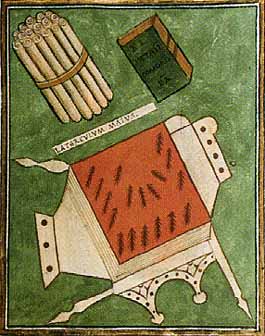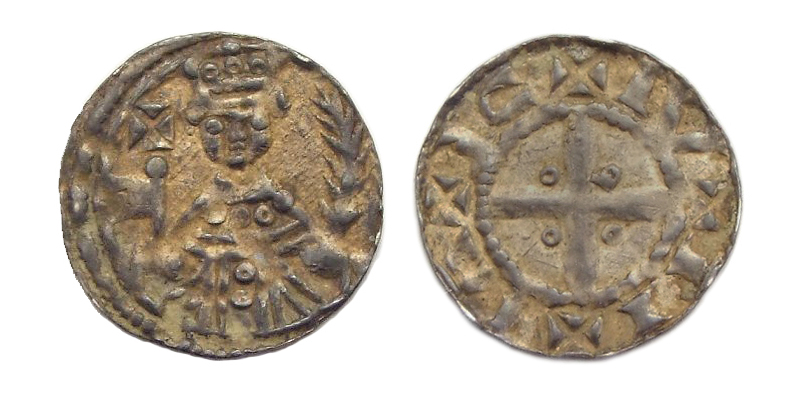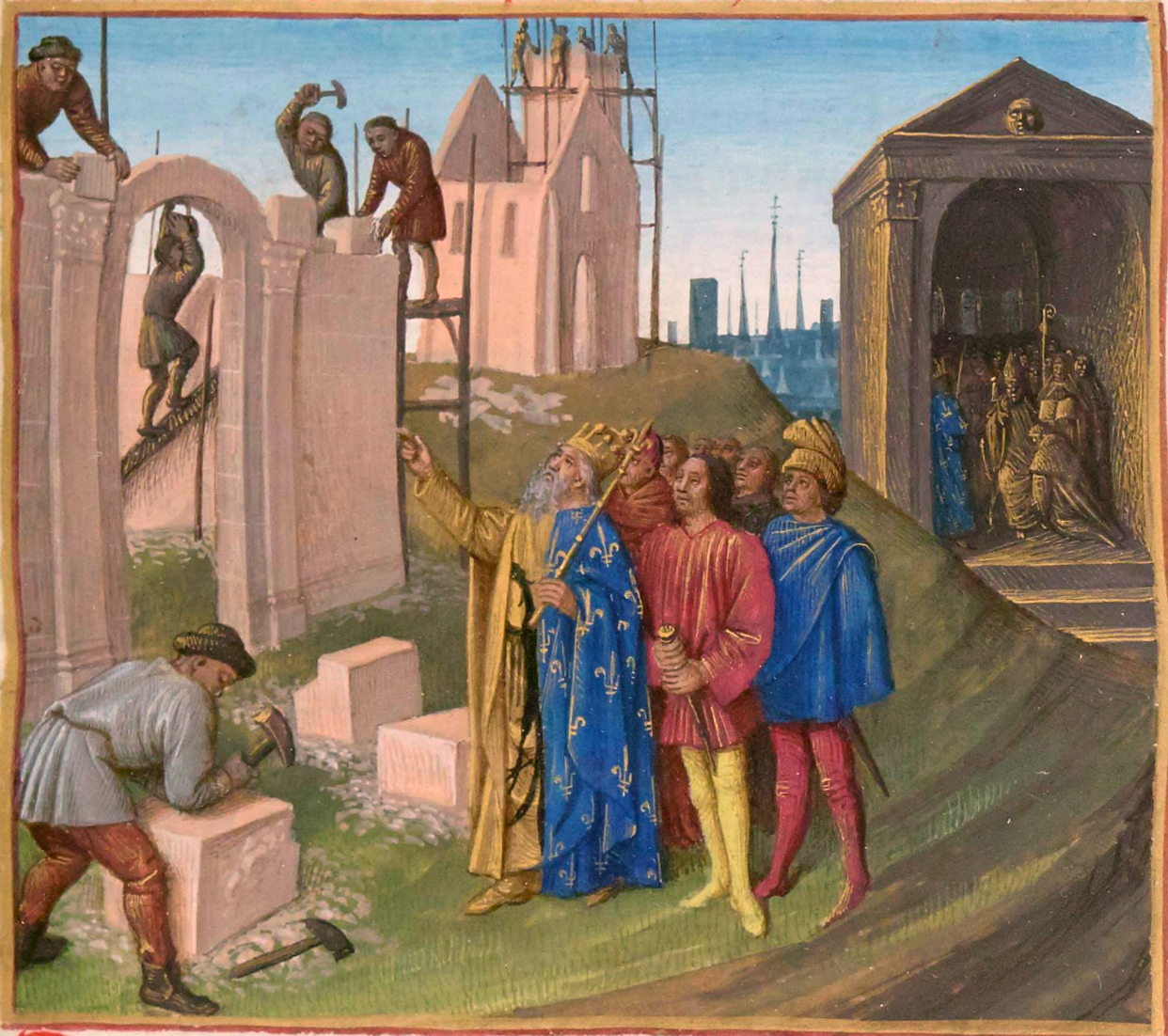|
Étienne De Bar
Étienne de Bar (died 1163), sometimes Stephen of Bar, was a French cardinal and nephew of Pope Calixtus II. He was the son of Theodoric I, Count of Montbéliard and Ermentrude of Burgundy (1055–1105), the daughter of William I, Count of Burgundy. He was brought up at Vienne, under the supervision of his uncle, Guy de Bourgogne, Archbishop of Vienne. He was probably in his uncle's entourage when he was summoned to a conference by Pope Gelasius II at Cluny. The pope died on 29 January 1119, before Guy de Bourgogne could reach Cluny; but he arrived at Cluny on February 1, and was elected pope the next day, taking the name Calixtus II. Cardinal and bishop Étienne subscribed a papal bull at Benevento on 24 September 1120, it is likely that he was named a cardinal during the ''Quatuor temporum'' earlier in September. He was bishop of Metz from 1120 until his death in 1163, though he was prevented from taking possession of the see for a number of years because of the hostility of the ... [...More Info...] [...Related Items...] OR: [Wikipedia] [Google] [Baidu] |
Cardinal (Catholicism)
A cardinal is a senior member of the clergy of the Catholic Church. As titular members of the clergy of the Diocese of Rome, they serve as advisors to the pope, who is the bishop of Rome and the Head of the Church#Catholic Church, visible head of the worldwide Catholic Church. Cardinals are chosen and formally created by the pope, and typically hold the title for life. Collectively, they constitute the College of Cardinals. The most solemn responsibility of the cardinals is to elect a new pope in a Papal conclave, conclave, almost always from among themselves, with a few historical exceptions, when the Holy See is Sede vacante#Vacancy of the Holy See, vacant. During the period between a pope's death or resignation and the election of his successor, the day-to-day governance of the Holy See is in the hands of the College of Cardinals. The right to participate in a conclave is limited to cardinals who have not reached the age of 80 years by the day the vacancy occurs. With the pope ... [...More Info...] [...Related Items...] OR: [Wikipedia] [Google] [Baidu] |
Primicerius
The Latin term ''primicerius'', Hellenized as ''primikērios'' (), was a title applied in the later Roman Empire and the Byzantine Empire to the heads of administrative departments, and also used by the Church to denote the heads of various colleges. Etymologically the term derives from ''primus in cera'', which is to say ''in tabula cerata'', the first name in a list of a class of officials, which was usually inscribed on a waxed tablet. Civil and military From their origin in the court of the Dominate, there were several ''primicerii'' (''primikērioi'' in Greek, from the 12th century usually spelled ''primmikērioi''). In the court, there was the ''primicerius sacri cubiculi'' (in Byzantine times the ''primikērios'' of the ''kouboukleion''), in charge of the emperor's bedchamber, almost always a eunuch. The title was also given to court officials in combination with other offices connected to the imperial person, such as the special treasury (''eidikon'') or the imperial wa ... [...More Info...] [...Related Items...] OR: [Wikipedia] [Google] [Baidu] |
Frederick I, Holy Roman Emperor
Frederick Barbarossa (December 1122 – 10 June 1190), also known as Frederick I (; ), was the Holy Roman Emperor from 1155 until his death in 1190. He was elected King of Germany in Frankfurt am Main, Frankfurt on 4 March 1152 and crowned in Aachen on 9 March 1152. He was crowned King of Italy on 24 April 1155 in Pavia and emperor by Pope Adrian IV on 18 June 1155 in Rome. Two years later, the term ' ("holy") first appeared in a document in connection with his empire. He was later formally crowned King of Burgundy, at Arles on 30 June 1178. His nickname of ' (meaning "Red Beard" in Italian) "was first used by the Republic of Florence, Florentines only in 1298 to differentiate the emperor from his grandson, Frederick II, Holy Roman Emperor, Frederick II ... and was never employed in medieval Germany" (the colour red was "also associated in the Middle Ages with malice and a hot temper"; in reality, Frederick's hair was "blond", although his beard was described by a contemporar ... [...More Info...] [...Related Items...] OR: [Wikipedia] [Google] [Baidu] |
1159 Papal Election
The papal election held from 4 to 7 September 1159 following the death of Pope Adrian IV resulted in the election of two rival popes. A majority of the cardinals elected Cardinal Rolando of Siena as Pope Alexander III, but a minority refused to recognize him and elected their own candidate, Ottaviano de Monticelli, who took the name Victor IV, creating a schism that lasted until 1178. The schism was a result of the growing tensions inside the Sacred College of Cardinals concerning the foreign policy of the Holy See. The Papal States in the 12th century were a buffer between the Holy Roman Empire and the Norman Kingdom of Sicily. After the Concordat of Worms in 1122, the Papacy allied with the Empire rather than with the Normans, but during the pontificate of Adrian IV (1154–59) this alliance broke up because Emperor Frederick I Barbarossa did not fulfil the terms of the treaty of Constance (1153) that obliged him to help the Papacy to restore its authority in Rome and in other ... [...More Info...] [...Related Items...] OR: [Wikipedia] [Google] [Baidu] |
Pope Adrian IV
Pope Adrian (or Hadrian) IV (; born Nicholas Breakspear (or Brekespear); 1 September 1159) was head of the Catholic Church and ruler of the Papal States from 4 December 1154 until his death in 1159. Born in England, Adrian IV was the first Pope to have been born and raised in an English-speaking country. Adrian was born in Hertfordshire, England, but little is known of his early life. Although he does not appear to have received a great degree of schooling, while still a youth he travelled to the south of France where he was schooled in Arles, studying law. He then travelled to Avignon, where he joined the Abbey of Saint-Ruf, Avignon, Abbey of Saint-Ruf. There he became a canon regular and was eventually appointed abbot. He travelled to Rome several times, where he appears to have caught the attention of Pope Eugene III, and was sent on a mission to Catalonia where the Reconquista was attempting to reclaim land from the Muslim Al-Andalus. Around this time his abbey complained to ... [...More Info...] [...Related Items...] OR: [Wikipedia] [Google] [Baidu] |
Frederick Barbarossa
Frederick Barbarossa (December 1122 – 10 June 1190), also known as Frederick I (; ), was the Holy Roman Emperor from 1155 until his death in 1190. He was elected King of Germany in Frankfurt on 4 March 1152 and crowned in Aachen on 9 March 1152. He was crowned King of Italy on 24 April 1155 in Pavia and emperor by Pope Adrian IV on 18 June 1155 in Rome. Two years later, the term ' ("holy") first appeared in a document in connection with his empire. He was later formally crowned King of Burgundy, at Arles on 30 June 1178. His nickname of ' (meaning "Red Beard" in Italian) "was first used by the Florentines only in 1298 to differentiate the emperor from his grandson, Frederick II ... and was never employed in medieval Germany" (the colour red was "also associated in the Middle Ages with malice and a hot temper"; in reality, Frederick's hair was "blond", although his beard was described by a contemporary as "reddish"). In German, he was known as ', which in English means " ... [...More Info...] [...Related Items...] OR: [Wikipedia] [Google] [Baidu] |
Bernard Of Clairvaux
Bernard of Clairvaux, Cistercians, O.Cist. (; 109020 August 1153), venerated as Saint Bernard, was an abbot, Mysticism, mystic, co-founder of the Knights Templar, and a major leader in the reform of the Benedictines through the nascent Cistercians, Cistercian Order. Bernard was sent to found Clairvaux Abbey only a few years after becoming a monk at Cîteaux Abbey, Cîteaux. In the year 1128, Bernard attended the Council of Troyes (1129), Council of Troyes, at which he traced the outlines of the Rule of the Knights Templar, which soon became an ideal of Christian nobility. On the death of Pope Honorius II in 1130, a schism arose in the church. Bernard was a major proponent of Pope Innocent II, arguing effectively for his legitimacy over the Antipope Anacletus II. The eloquent abbot advocated crusades in general and convinced many to participate in the unsuccessful Second Crusade, notably through a famous sermon at Council of Vézelay, Vézelay (1146). Bernard was canonized just ... [...More Info...] [...Related Items...] OR: [Wikipedia] [Google] [Baidu] |
Hillin Of Falmagne
Hillin of Falmagne (, also spelled ''Falemagne, Fallemanien, Fallenmaigne, etc''.) (''c''. 1100 – 23 October 1169), was the Archbishop of Trier from 1152. He was an imperialist and a partisan of Frederick Barbarossa in the Investiture Controversy of the twelfth century. Biography Hillin's familial origins trace back to the commune of Falmagne near Dinant in Wallonia, now in the province of Namur in Belgium, but then part of the Prince-Bishopric of Liège. He was educated in France. In 1130, he arrived in Trier, taking part in the consecration of the previous Archbishop, Albero of Montreuil. In 1142, he took up direction of the cathedral school; in 1150, he was named Dean of the cathedral, and in 1152 he was elected Archbishop by the clergy and the people. Imperial Politics Later that year Barbarossa was elected King of the Romans with the Archbishop's support. Shortly after the election Hillin made his first journey into Italy, accompanying the Archbishop of Salzburg ... [...More Info...] [...Related Items...] OR: [Wikipedia] [Google] [Baidu] |
Second Crusade
The Second Crusade (1147–1149) was the second major crusade launched from Europe. The Second Crusade was started in response to the fall of the County of Edessa in 1144 to the forces of Zengi. The county had been founded during the First Crusade (1096–1099) by the future King Baldwin I of Jerusalem in 1098. While it was the first Crusader state to be founded, it was also the first to fall. The Second Crusade was announced by Pope Eugene III, and was led in the east by European kings Louis VII of France and Conrad III of Germany, with help from a number of other European nobles. The armies of the two kings marched separately across Europe. After crossing Byzantine territory into Anatolia, both armies were separately defeated by the Seljuk Turks. The main Western Christian source, Odo of Deuil, and Syriac Christian sources claim that the Byzantine Emperor Manuel I Komnenos secretly hindered the crusaders' progress, particularly in Anatolia, where he is alleged to have de ... [...More Info...] [...Related Items...] OR: [Wikipedia] [Google] [Baidu] |
Pope Eugenius III
Pope Eugene III (; c. 1080 – 8 July 1153), born Bernardo Pignatelli, or possibly Paganelli, called Bernardo da Pisa, was head of the Catholic Church and ruler of the Papal States from 15 February 1145 to his death in 1153. He was the first Cistercian to become pope. In response to the fall of Edessa to the Muslims in 1144, Eugene proclaimed the Second Crusade. The crusade failed to recapture Edessa, which was the first of many failures by the Christians in the crusades to recapture lands won in the First Crusade. He was beatified in 1872 by Pope Pius IX. Early life Bernardo was born in the vicinity of Pisa. Little is known about his origins and family except that he was son of a certain Godius. From the 16th century he is commonly identified as member of the family of Paganelli di Montemagno, which belonged to the Pisan aristocracy, but this has not been proven and contradicts earlier testimonies that suggest he was a man of rather humble origins. In 1106 he was a canon of th ... [...More Info...] [...Related Items...] OR: [Wikipedia] [Google] [Baidu] |
Aachen
Aachen is the List of cities in North Rhine-Westphalia by population, 13th-largest city in North Rhine-Westphalia and the List of cities in Germany by population, 27th-largest city of Germany, with around 261,000 inhabitants. Aachen is located at the northern foothills of the High Fens and the Eifel Mountains. It sits on the Wurm (Rur), Wurm River, a tributary of the Rur (river), Rur, and together with Mönchengladbach, it is the only larger German city in the drainage basin of the Meuse. It is the westernmost larger city in Germany, lying approximately west of Cologne and Bonn, directly bordering Belgium in the southwest, and the Netherlands in the northwest. The city lies in the Meuse–Rhine Euroregion and is the seat of the Aachen (district), district of Aachen ''(Städteregion Aachen)''. The once Celts, Celtic settlement was equipped with several in the course of colonization by Roman people, Roman pioneers settling at the warm Aachen thermal springs around the 1st cen ... [...More Info...] [...Related Items...] OR: [Wikipedia] [Google] [Baidu] |
Conrad III Of Germany
Conrad III (; ; 1093 or 1094 – 15 February 1152) of the Hohenstaufen dynasty was from 1116 to 1120 Duke of Franconia, from 1127 to 1135 anti-king of his predecessor Lothair III, and from 1138 until his death in 1152 King of the Romans in the Holy Roman Empire. He was the son of Duke Frederick I of Swabia and Agnes, a daughter of Emperor Henry IV. His reign saw the start of the conflicts between the Guelphs and Ghibellines. He was involved in the failed Second Crusade with Louis VII, where he would fight and lose at Doryleum and would later fall ill and return to Constantinople. After recuperating, he went to Jerusalem but would experience a string of failed sieges. Later returning from the Crusade, he was entangled in some conflicts with Welf VI's claim to the Duchy of Bavaria. On his deathbed, he designated his nephew Frederick Barbarossa as his successor instead of his son, Frederick IV, Duke of Swabia. Descent The origin of the House of Hohenstaufen in ... [...More Info...] [...Related Items...] OR: [Wikipedia] [Google] [Baidu] |








